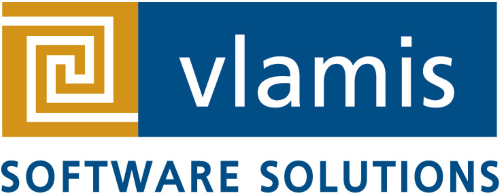Analytics projects are notoriously complex. They bring together a team of professionals in various roles with different strengths and weaknesses. That team must satisfy the competing expectations of diverse stakeholders and users and deliver a reliable and usable solution while working with some of the most powerful, complicated technology around. In a project with so many moving parts, the pitfalls abound, but tight timelines and tighter budgets leave little room for error. Here, then, are the key factors for keeping your analytics project on time and on budget.
Create a Project Plan
Proper planning is the key to any successful project. A solid plan is a blueprint for your project that increases the likelihood of success.
Items to consider when planning your project
- Identify key stakeholders.
- Define high-level project goals.
- Identify project team members.
- Understand the strengths and weakness of the team. For example, are they good with time management, or is that an area where they need help?
- Know the availability and commitment of each member.
- Make sure management is aware of how much time is allocated for the individual. Make sure they are committed for the entire length of the project.
- Set realistic goals and timelines, then make sure everyone understands them and sticks to them.
- Use an Agile approach, with short working iterations of 2-3 week sprints.
Hold a Project Kick-Off
The purpose of an official project kick-off is three-fold: to set the tone for the project, to generate enthusiasm for the work ahead, and to ensure all team members are on the same page.
To have a successful project kickoff:
- Ensure that all team members can attend; it saves time down the road if you don’t need to wait for others to get up to speed.
- Create an environment where everyone has an equal voice and feels free to speak up.
- Determine the goals and timeline of the project.
- Make sure everyone is on the same page:
- Make sure timeline and goals are realistic.
- Agree to take an Agile development approach:
- Timeline should be broken into short working iterations
- Create 2–3 week sprints.
- Make sure everyone understands all goals and timelines. Get everyone to sign off, even if it is just a verbal sign-off.
Get Stakeholder Input and Buy-In
Work closely with the stakeholders and user community throughout the project; call them with questions, show progress, and make sure they are on board. If you keep the stakeholders and user community involved, they will identify issues with the deliverables early on and you will avoid a lot of rework.
Communicate Early and Often
Good communication is the glue that binds all the other aspects of the project together. Without a communication infrastructure in place, project managers don’t relay vital information to the stakeholders, users, and technical team. Technical teams don’t transfer the necessary knowledge to the stakeholders and user community, who in turn fail to tell the team of needed changes. The end result is a system that satisfies no one.
To keep the communication lines open and the conversations flowing, take these steps:
- Distribute a project plan detailing timelines, tasks, and milestones to all project team participants, including executive sponsors, user community representatives, team leads, team members, and team members’ managers.
- Put the project plan and all tasks into web-based planning and tracking software like JIRA.
- Designate a place to keep shared documents, and then make sure the team uses it.
- Conduct regularly scheduled meetings:
- Daily stand-up with the team members doing the work. (15 minutes) Everyone gives a brief update to identify accomplishments as well as roadblocks.
- Biweekly status meetings/sprint review. (1 hour) This should include team members, team leads, and members from the user community. Send out a status report in advance and walk through it during the call. This meeting helps get answers, because people don’t always respond to emails. Topics to cover include:
- Items accomplished since last meeting (sprint)
- Items to be accomplished prior to next meeting (sprint)
- Items due this week, but not accomplished – Impact on project deliverables
- Key decisions that need to be made
- Sign-off from user community that work is completed as planned
- Monthly executive update/sprint retrospective. (1-2 hours) Include all team members, management, executive sponsors, and representatives from the user community. These meetings include:
- Where we are on the project.
- Changes to the project timeline (positive or negative).
- Demonstration or discussion of what has been accomplished to date.
- What worked and what didn’t.
- Identify anything that needs to be moved to the next sprint.
Avoid Scope Creep
Scope creep undermines both timelines and budgets. Once the user community starts seeing some progress, they can envision the analytics capabilities better, and they start requesting changes. Technical people especially love solving problems and cannot resist responding to user requests. This can side-track the project very quickly.
Rely on your project plan and communication infrastructure to stop scope creep before it starts!
- When a user has a request, the team member should document it (either formally through tracking software or at least informally via email) and take it to the project manager.
- The project manager should identify the new request as an enhancement and take it to the executive sponsor and user representatives for evaluation.
- Only after the request has been approved and prioritized should it be added to the plan.
- The new request can be added to the current sprint or a later one, as long as everyone is aware of it and its impact on the project timeline and other priorities.
The Secrets to Success
To sum up, start your analytics project with a detailed project plan. Kick off the project by setting reasonable expectations with the team and establishing buy-in from the stakeholders. Communicate clearly and frequently, and finally, create a process for avoiding scope creep. Doing these things will ensure your project has the resilience to handle whatever bumps in the road you may encounter and will ultimately keep you on the track to success.



